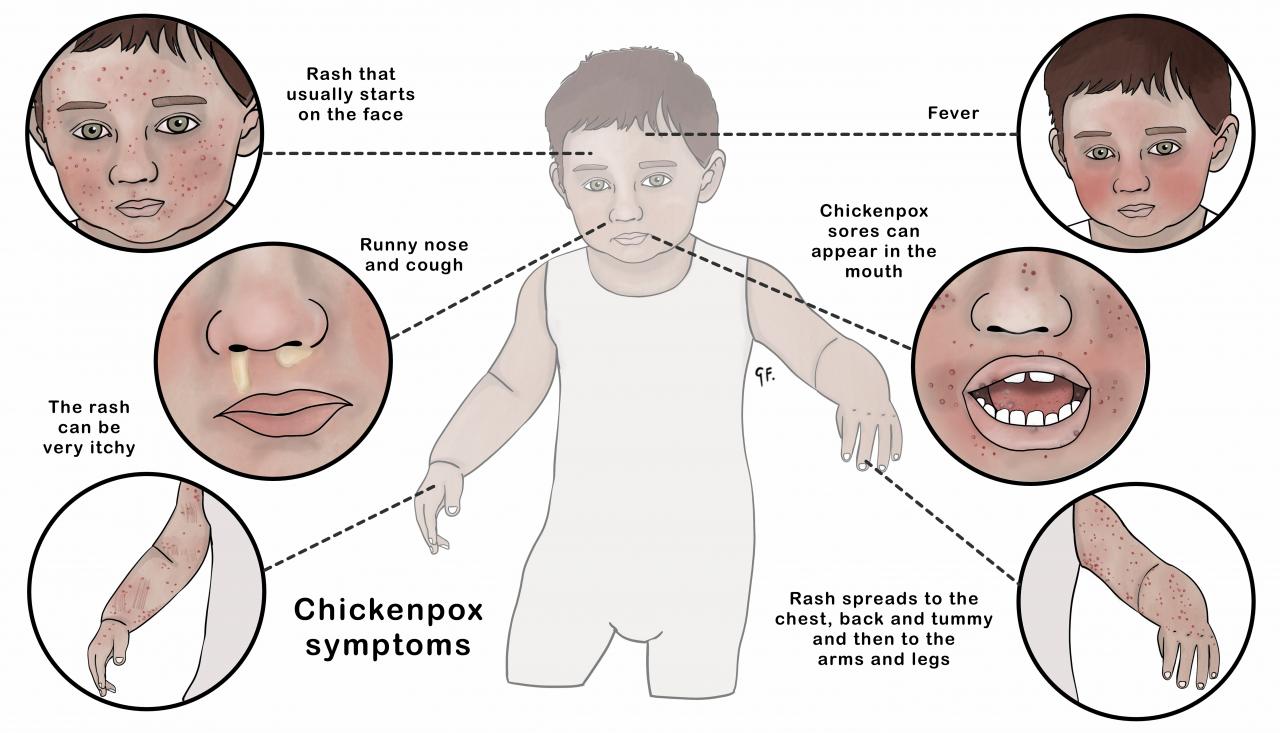Chickenpox
Chickenpox
Chickenpox is a common childhood illness caused by a virus. Tamariki (children) with chickenpox need to stay home from school and daycare. Tamariki can have free chickenpox immunisation at 15 months of age.
Key points about chickenpox
- tamariki can have free chickenpox immunisation at 15 months of age
- chickenpox is a common childhood illness caused by a virus
- it is very easy to catch
- most cases of chickenpox are mild and tamariki get better completely
- tamariki with chickenpox need to stay home from school and daycare
- chickenpox can sometimes cause serious complications
- take your child to see a doctor if you're worried about your child's condition
What is chickenpox?
Chickenpox is caused by a virus called varicella virus or varicella zoster virus. It is the same virus that can cause shingles, which usually occurs later in life.
Who is at risk of getting chickenpox?
Tamariki are at risk of getting chickenpox if they haven't had chickenpox immunisation or chickenpox.
Chickenpox is more common in unimmunised tamariki between the ages of 2 and 10 years.
What are the symptoms of chickenpox?
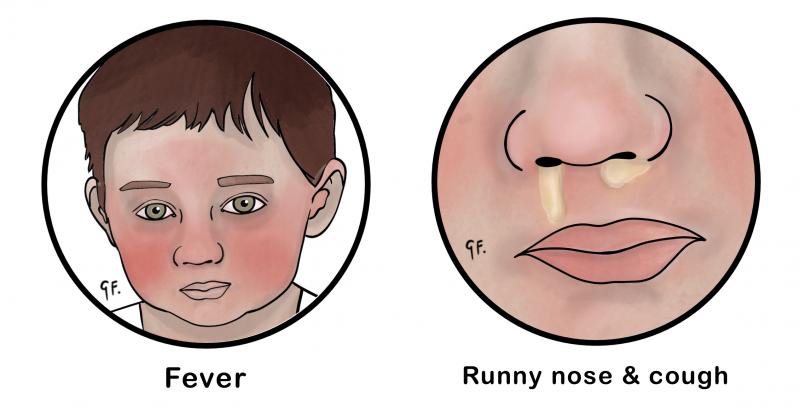
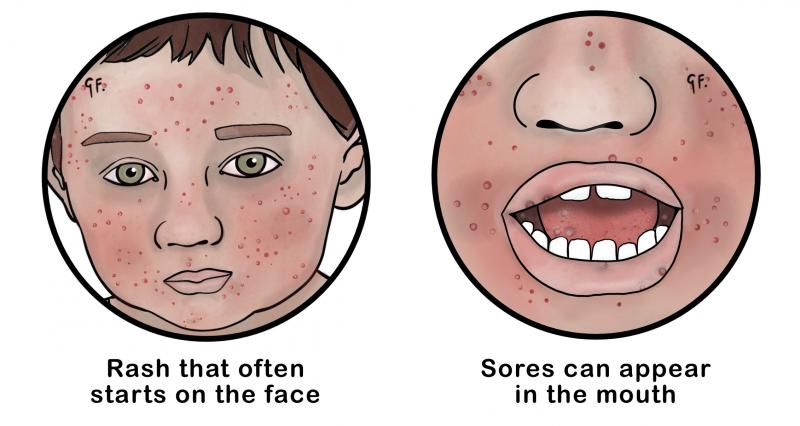
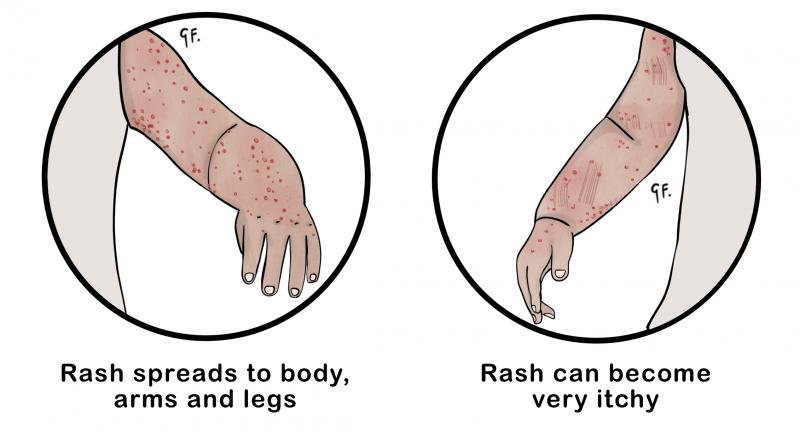
Early symptoms
Chickenpox can often start with the following symptoms:
- a fever
- a headache
- a runny nose
- a cough
- loss of appetite
- feeling tired
Chickenpox rash
Red rash
A red rash follows 1 to 2 days later. It usually starts on the face and scalp, spreads to the chest, back and tummy and then to the arms and legs. It can also appear inside the ears, on the eyelids, inside the nose and mouth, and even around the genital area.
The rash continues to spread for 3 or 4 days. It usually becomes very itchy.
The chickenpox rash is usually very itchy.
Blisters
Within a few hours after each spot appears, a blister forms. It may be full of yellow fluid. After a day or so, the fluid turns cloudy. The blisters release liquid containing the virus, then form crusts or scabs that fall off after 1 to 2 weeks. The spots heal at different stages, some faster than others, so your child may have the rash in several different stages at once.
If blisters are forming, chickenpox can easily spread to others.
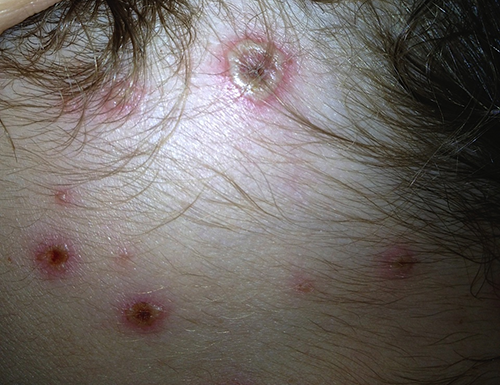

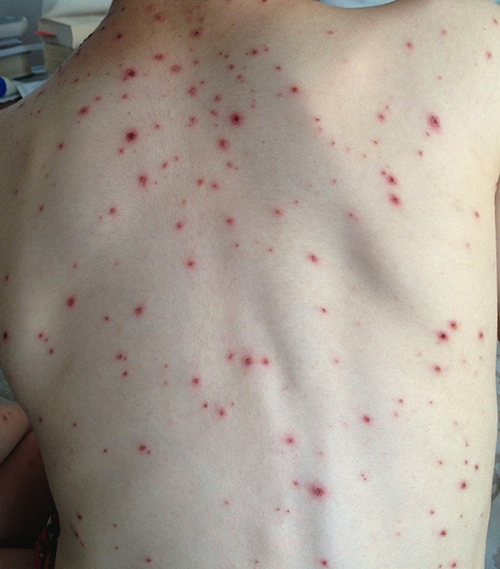
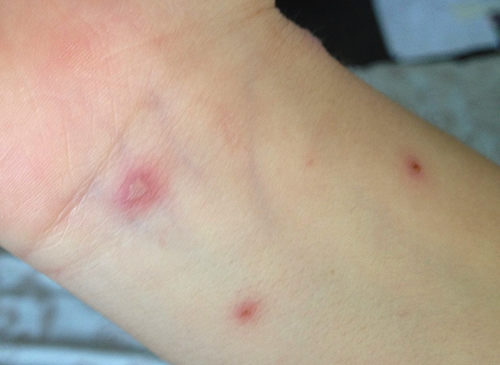
How does chickenpox spread?
Chickenpox spreads very easily and is very easy to catch.
The chickenpox virus spreads through the air (by coughing and sneezing) and by direct contact with mucus, saliva, or liquid from blisters. Your child can catch the chickenpox virus from touching clothing or other things that have the blister liquid on them.
Tamariki may show first signs of chicken pox days to weeks after catching it.
Can my child spread chickenpox?
Your child can easily spread chickenpox to others. Your child can keep spreading it until all their blisters have dried up. This usually takes 5 to 7 days.
Should my child with chickenpox stay home?
Tamariki with chickenpox should stay away from daycare or school, and public places.
How do I care for my child with chickenpox at home?
Eating and drinking
Make sure your child drinks plenty of water.
When blisters in the mouth and throat affect drinking and eating, offer clear cool drinks and soft bland foods - avoid acidic drinks such as fruit juices.
Clothing, bed linen and keeping nails trimmed
Trim your child's nails short and use mittens or clean socks on their hands to decrease the risk of infection from scratching, especially overnight.
Dress your child in loose-fitting clothing and change the bed linen daily.
Cool or lukewarm bath
You could try giving your child a cool or lukewarm bath but do not use soap as it can dry out your child's skin. Try adding oatmeal, baking soda or moisturising bath lotion to the water. Pat skin dry, do not rub, after bathing.
Calamine lotion
For many years, people have used calamine lotion to help with the itch from chickenpox and found it may relieve itching. There's really no clear evidence around its use. Calamine is generally considered to be safe although some suggest it may dry the skin too much.
Children with eczema
If your child with chickenpox also has eczema, and the above steps are not controlling the itching, talk to your doctor.
Can I use medicines to relieve chickenpox symptoms?
If your child is miserable because of a fever, headache or other aches and pains, you can give paracetamol to make them more comfortable. You must follow the dosage instructions on the bottle. It is dangerous to give more than the recommended dose.
Don't give your child aspirin or ibuprofen
Aspirin - never give your child or young person aspirin as this may increase the risk of Reye syndrome, which is a rare and serious illness.
Ibuprofen (Nurofen, Brufen, Fenpaed) - the use of ibuprofen may be associated with more severe skin and soft tissue infections after chickenpox (particularly necrotising fasciitis, a rare infection of the deeper layers of skin).
Are there likely to be complications from chickenpox?
In most tamariki, chickenpox is a mild illness and they get better completely. Some tamariki can have scarring from the spots.
Some tamariki get complications and need to go to hospital or even intensive care.
Skin infections
The most common complication is a skin infection which starts from chickenpox spots. About 1 in 20 tamariki with chickenpox will get a bacterial skin infection that needs treatment with antibiotics.
Bacterial skin infections can lead to bacterial infections in other parts of the body. They can include:
- lung infections (pneumonia)
- bloodstream infection (septicaemia)
Other complications
Other rare complications include:
- brain inflammation (encephalitis)
- severe secondary infections needing intensive care
- death - in very rare cases, tamariki can die of complications from chickenpox
Can chickenpox be prevented?
All tamariki in Aotearoa New Zealand can have chickenpox immunisation at 15 months of age. It is part of the National Immunisation Schedule.
Most people who have this vaccine will not get chickenpox. If an immunised person does get chickenpox, it is usually mild.
Your child can also have free chickenpox immunisation if they turned 11 years of age on or after 1 July 2017, if they haven't already had chickenpox or chickenpox immunisation.
Certain high-risk people will still be able to get the vaccine free regardless of their age. Talk to your family doctor or practice nurse.
See the 'Immunise' website for more information about chickenpox immunisation
Is my child at higher risk from chickenpox?
Chickenpox can be more dangerous for certain groups of people who have reduced infection-fighting ability (immunity). The following should see their doctor if they (or you) think they have been exposed to chickenpox, as they may need treatment to prevent chickenpox:
- pregnant women
- newborns
- anyone who is taking long-term oral steroids
- anyone on chemotherapy or who has had an organ transplant
- anyone who is taking medicine (for example, immunosuppressive medicines) which reduces immunity
- anyone who has a condition which reduces immunity (such as cancer or HIV)
This page last reviewed 13 October 2023.
Do you have any feedback for KidsHealth?
If you have any feedback about the KidsHealth website, or have a suggestion for new content, please get in touch with us.
Email us now